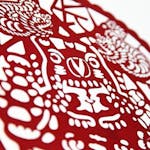Description
In this course, you will :
- introduces several overall compositing workflows, as well as a slew of new tips and tricks and keying techniques.
- Learn about green-screen, blue-screen, luma, and saturation keys, as well as spill suppression, colour correction, and edge refinement.
Syllabus :
1. Keying Workflows
- A look at different keying workflows
- Creating an uber key
- The nature of grain and noise
- Green-screen vs. blue-screen keying
- Which keyer is best?
2. Pre-Processing the Green Screen
- Analyze the clip
- How to manage grain and noise
- Pre-processing the clip for the keyer
- Screen-correction workflow
- Tips on adjusting the IBKColor node
- How the IBKColor assist works
- Building a clean plate from a clip
- Building a clean plate without an IBK node
- Working with a real clean plate
- Retaining shadows with screen corrections
- Stack IBKColor nodes for cleaner clean plates
- Good (and bad) tracking markers
- Tracking marker removal techniques
- Removing tracking markers with screen correction
3. Other Types of Keys
- Unleashing the power of your luma keys
- How to make even more powerful luma keys
- Keying on hue
- Keying on saturation
- Discovering NUKE's hidden chroma keyer
- Keying with just one channel
- How to create a color difference key
- How to create a texture key
4. Building the Uber Key
- How to cut and paste keys together
- Which math operation to use and when
- Assisting the keyer with additional keys
- Using garbage mattes to save time
- Creating core mattes for solid keys
5. Spill Suppression
- What is spill?
- How spill suppression works
- Spill suppression with the Hue Correct node
- Spill suppression with gizmos
- How to prevent despill artifacts
- How to fix despill artifacts
- Adjusting the spill luminance and color
- Steve Wright's adaptive despill
6. Compositing Techniques
- The classic Premultiply > Merge over
- Improving edges with an AddMix comp
- How to do a soft comp/hard comp
- The processed foreground technique
- Adding edge detail with an additive keyer
7. Color Correcting
- Effects of color correction on pixels and pictures
- The Grade node vs. the ColorCorrect node
- Premultiply and unpremultiply
- How to match grade two clips
- Color match keyed layers workflow
8. Workflow Examples
- Compositing keyer outputs
- The basic uber key composite
- Soft key/hard key with luminance adjusted despill
- Uber key with split soft key and split despill
- Uber key with the additive keyer
- Screen correction with adaptive despill
- Screen correction with a processed background
9. Sweetening the Comp
- How to apply light wrap to your comp
- When to use edge blending
- Adding interactive lighting
- Animating the interactive lighting
- Easy ways to synthesize shadows
- How to QA your comp
10. Fixing Edge Problems
- Sculpting your key edges
- Recoloring the RGB edges
- Replacing discolored edges: Theory
- Replacing discolored edges: Practice
11. Special Keying Solutions
- How to add more hair detail
- The special case of keying blond hair
- Keying for more semitransparency
- Techniques for better motion blur
- How to retain all of the depth of field
- Special keying techniques for smoke
- Extra special keying techniques for fire
- How to key a cloud out of the sky
- Keying reflections off of glass techniques
- How to cope with bad video
12. Appendix: Keyer Tutorials
- About the Keyer Tutorials appendix
- KEYLIGHT: Setting up a basic composite
- KEYLIGHT: Masking, fine-tuning, and spill suppression
- KEYLIGHT: Viewing status and multipass keying
- Primatte: Basic keying and spill suppression
- Primatte: Matte refinement and edge detail
- Primatte: Auto-Compute and advanced spill suppression
- Primatte: New features in Primatte V
- IBK keyer: Keying and compositing
- Ultimatte: Basic setup
- Ultimatte: Overall workflow
- Ultimatte: Matte tools and shadows
- Ultimatte: Spill suppression








